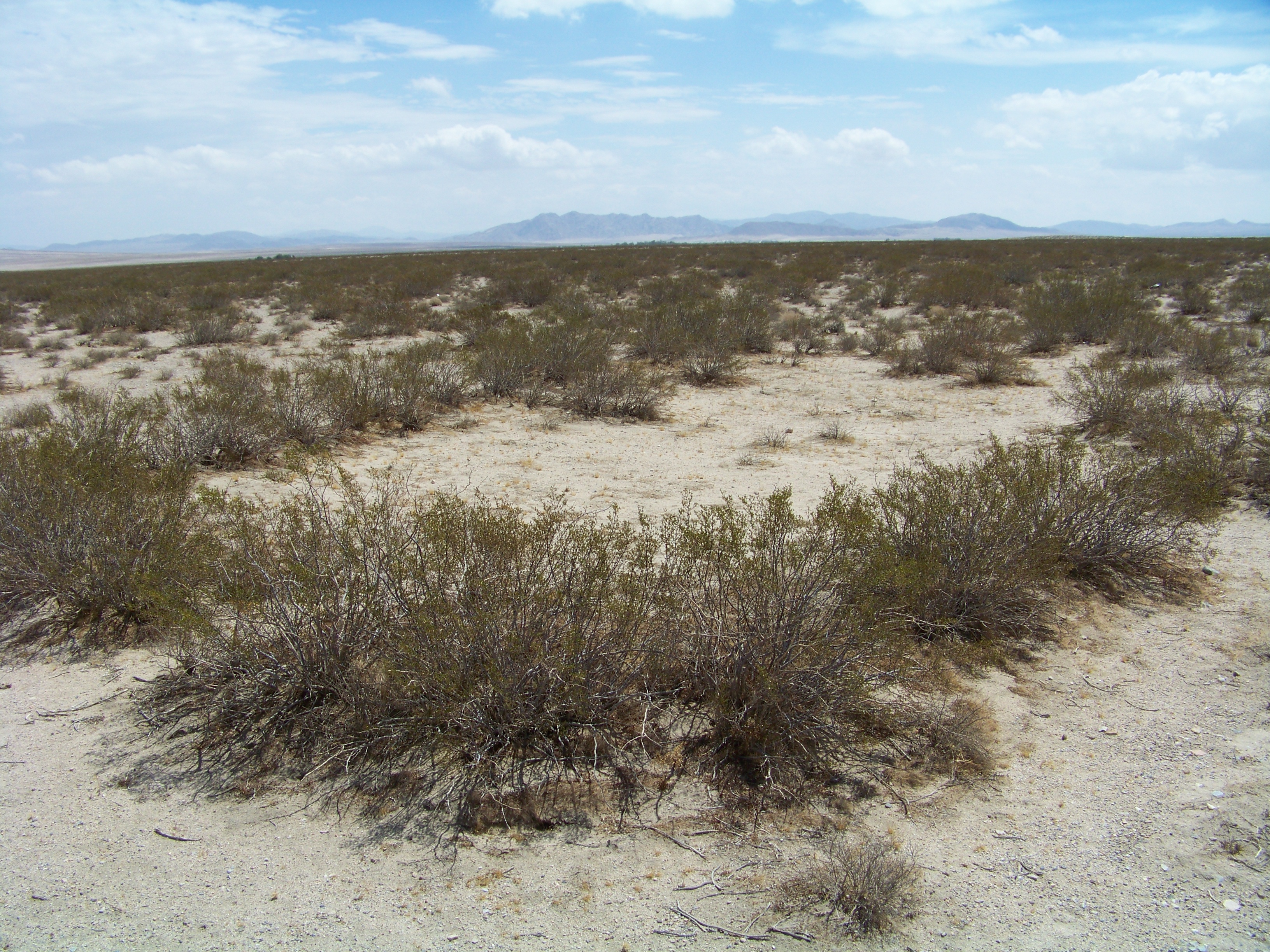King Clone on:
[Wikipedia]
[Google]
[Amazon]
 King Clone is thought to be the oldest
King Clone is thought to be the oldest
National Park Service: Creosote Bush webpage
Jepson Flora Project: ''Larrea tridentata''
 King Clone is thought to be the oldest
King Clone is thought to be the oldest creosote bush
''Larrea tridentata'', called creosote bush and greasewood as a plant, chaparral as a medicinal herb, and ''gobernadora'' (Spanish for "governess") in Mexico, due to its ability to secure more water by inhibiting the growth of nearby plants. In S ...
ring in the Mojave Desert
The Mojave Desert ( ; mov, Hayikwiir Mat'aar; es, Desierto de Mojave) is a desert in the rain shadow of the Sierra Nevada mountains in the Southwestern United States. It is named for the indigenous Mojave people. It is located primarily ...
. The ring is estimated to be 11,700 years old, making it one of the oldest living organisms on Earth. This single clonal colony plant of ''Larrea tridentata
''Larrea tridentata'', called creosote bush and greasewood as a plant, chaparral as a medicinal herb, and ''gobernadora'' (Spanish for "governess") in Mexico, due to its ability to secure more water by inhibiting the growth of nearby plants. In S ...
'' reaches up to in diameter, with an average diameter of .
Geography
The King Clone ring is on restricted-access land in the central Mojave Desert, near the towns ofLucerne Valley
Lucerne Valley is a census-designated place (CDP) and valley landform in the southern Mojave Desert, in western San Bernardino County, California.
Geography
The geographic valley is defined by the surrounding Granite Mountains, Ord Mountains, ...
and Landers. It is in the Creosote Rings Preserve of the Lucerne Valley and Johnson Valley.
Dating methodology
King Clone was identified and the age estimated by Frank Vasek, a professor at theUniversity of California, Riverside
The University of California, Riverside (UCR or UC Riverside) is a public land-grant research university in Riverside, California. It is one of the ten campuses of the University of California system. The main campus sits on in a suburban distr ...
. After Vasek hypothesized that the creosote ring was, in fact, one organism, Leonel da Silveira Lobo O'Reilly Sternberg (then a graduate student working in Vasek's lab), documented that plants within a ring had more similar characteristics than those from other plant clusters. Vasek then used two methods to estimate the age of the ring. One method counted rings
Ring may refer to:
* Ring (jewellery), a round band, usually made of metal, worn as ornamental jewelry
* To make a sound with a bell, and the sound made by a bell
:(hence) to initiate a telephone connection
Arts, entertainment and media Film and ...
and measured the distance of annual growth, and the other used radiocarbon dating on pieces of wood found in the center of the ring, and measuring their distances from each other and the living bushes. The two dating methods yielded similar results (age about 11,700 years).
Public appearances
This plant was in the 'Desert Worlds' episode of the David Attenborough TV series '' The Green Planet'' where he revisited the plant in 2022, after previously filming it in 1982. The plant had grown by less than one inch (25 mm) during this time.See also
* List of oldest trees *Fairy ring
A fairy ring, also known as fairy circle, elf circle, elf ring or pixie ring, is a naturally occurring ring or arc of mushrooms. They are found mainly in forested areas, but also appear in grasslands or rangelands. Fairy rings are detectable by ...
References
{{reflistExternal links
National Park Service: Creosote Bush webpage
Jepson Flora Project: ''Larrea tridentata''
King
King is the title given to a male monarch in a variety of contexts. The female equivalent is queen, which title is also given to the consort of a king.
*In the context of prehistory, antiquity and contemporary indigenous peoples, the tit ...
Natural history of San Bernardino County, California
Individual plants
King
King is the title given to a male monarch in a variety of contexts. The female equivalent is queen, which title is also given to the consort of a king.
*In the context of prehistory, antiquity and contemporary indigenous peoples, the tit ...
Larrea
Natural history of the Mojave Desert
Larrea tridentata
''Larrea tridentata'', called creosote bush and greasewood as a plant, chaparral as a medicinal herb, and ''gobernadora'' (Spanish for "governess") in Mexico, due to its ability to secure more water by inhibiting the growth of nearby plants. In S ...
Symbols of California
Oldest organisms